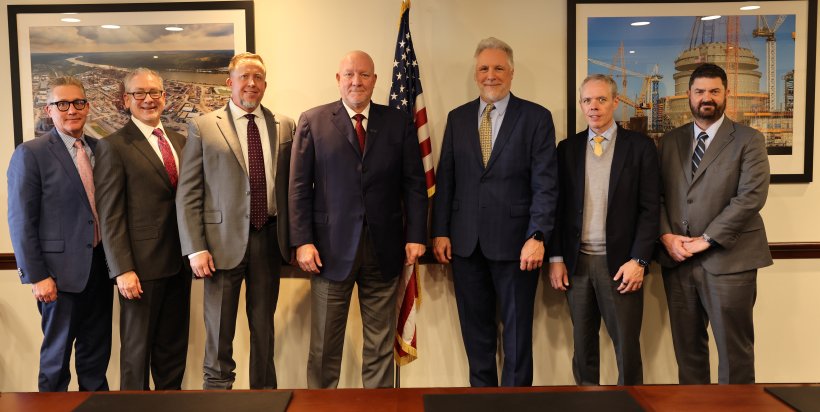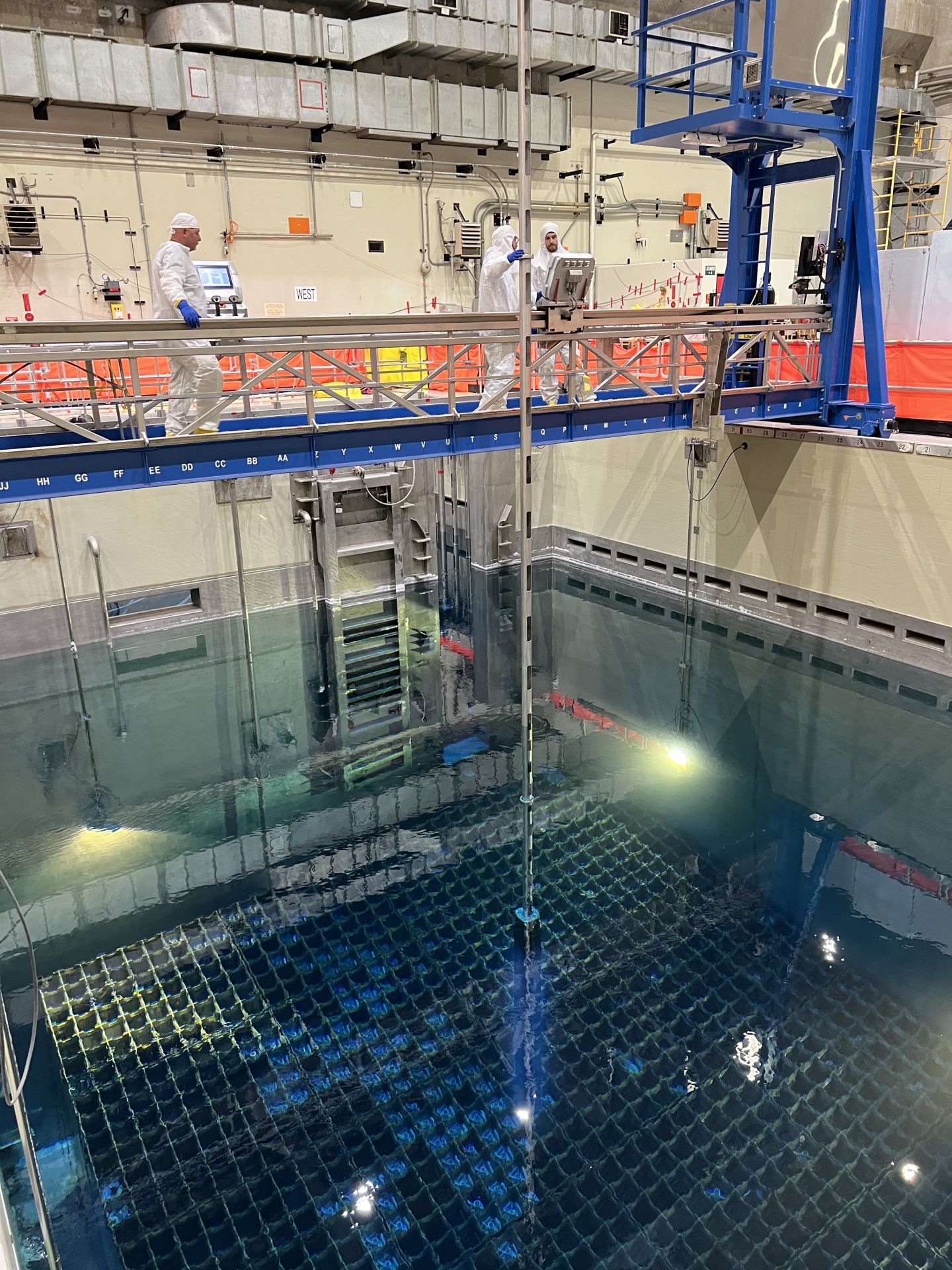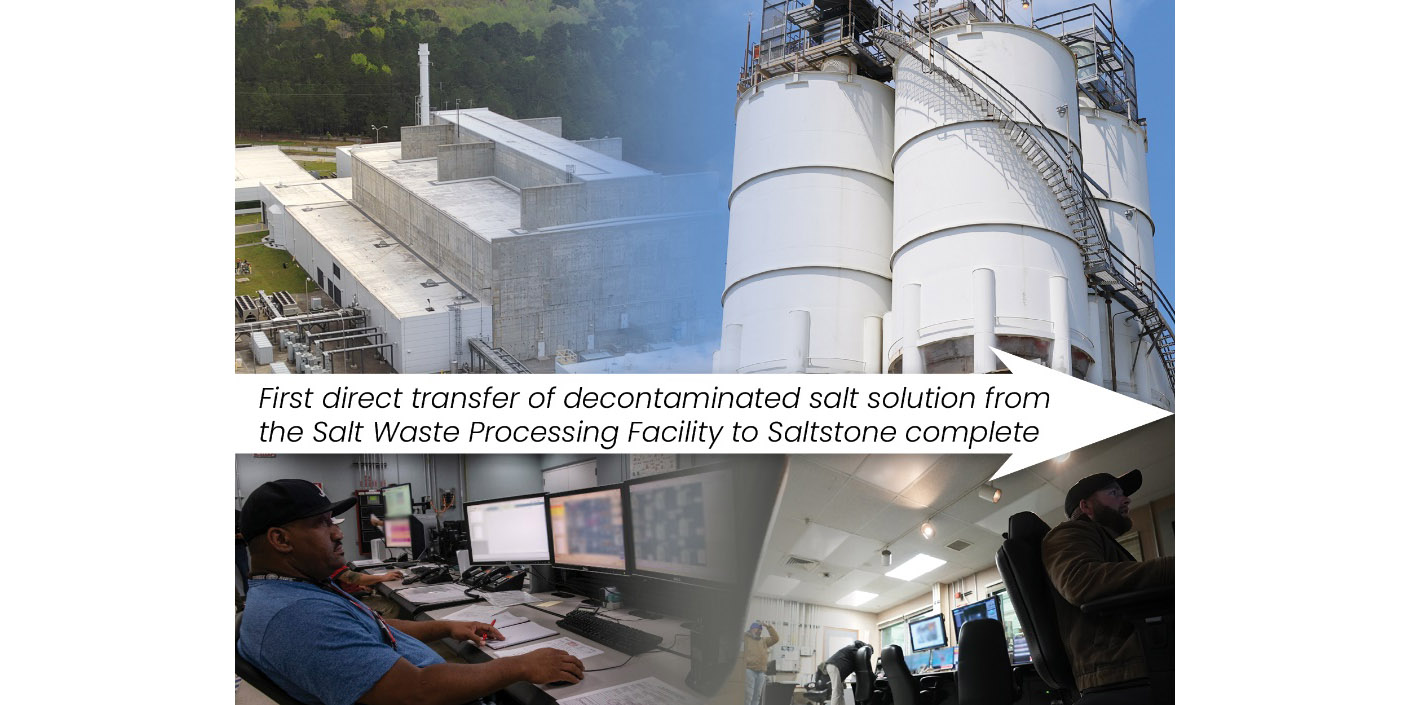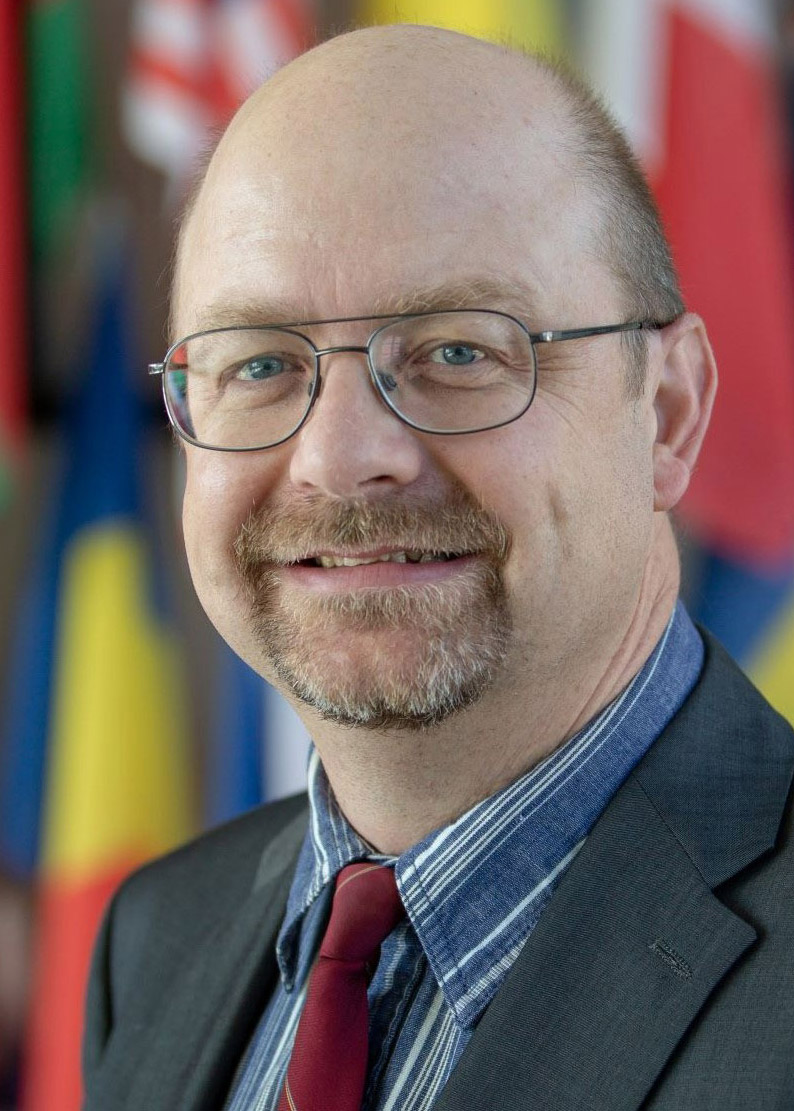Winthrop University personnel visit SRS

Faculty and staff from Winthrop University recently toured the Department of Energy’s Savannah River Site as part of a workforce development partnership.

A message from Electrical Builders, Ind.
America’s Top Performing Nuclear Plants Rely on Electrical Builders, Industries to Expand and Extend the Life of Their Critical Electrical Assets

Faculty and staff from Winthrop University recently toured the Department of Energy’s Savannah River Site as part of a workforce development partnership.
Rishi Sunak, U.K. prime minister, announced plans this week to boost Britain’s nuclear workforce by 40,000 to support submarine building and developing other aspects of the nuclear energy industry.
“In a more dangerous and contested world, the United Kingdom’s continuous at-sea nuclear deterrent is more vital than ever,” Sunak said in a statement. “Today we usher in the next generation of our nuclear enterprise, which will keep us safe, keep our energy secure, and keep our bills down for good.”
More information about the government’s plans are laid out in the Defence Nuclear Enterprise Command policy paper.

We welcome ANS members who have careered in the community to submit their own Nuclear Legacy stories, so that the personal history of nuclear power can be captured. For information on submitting your stories, contact nucnews@ans.org.
The James Wm. Behrens family legacy in America starts with Henry H. Behrens, who came across the pond from Germany in 1857. He was later joined by Wilhelmina, also from Germany, and they were married in Alton, Ill., in about 1862. One of their sons, George Wm. Sr., was my grandfather. He and his wife, Frances Walker (of Irish and English descent), had three sons, one of whom (George Wm. Jr.) was my father. I was born in 1947 and raised in the small country town of Bunker Hill, Ill. I attended Bunker Hill elementary and high schools, graduating from the latter in 1965.

The Department of Energy’s Office of Environmental Management announced the signing of a project labor agreement (PLA) between Oak Ridge Office of Environmental Management (OREM) contractor UCOR and North America’s Building Trades Unions (NABTU). The agreement, which allows for flexibility in wage increases and other incentives, is expected to help recruit and retain skilled construction trade workers at the DOE site in Tennessee.

The U.S. Department of Energy is constructing the Electron-Ion Collider (EIC) at Brookhaven National Laboratory to explore the boundaries of nuclear physics—both for the sake of science and to support diverse applications, including in nuclear medicine, radiation safety, and nuclear energy. The project, already supported by international collaborators in 40 countries, just secured a significant commitment from the United Kingdom.

The spent fuel pool at TVA’s Watts Bar nuclear power plant near Spring City, Tenn. (Photo: TVA)
Neutron absorber materials are used by nuclear power plants to maintain criticality safety margins in their spent nuclear fuel pools. These materials are typically in the form of fixed panels of a neutron-absorbing composite material that is placed within the fuel pools. (A comprehensive review of such materials used in wet storage pools and dry storage has been provided by the Electric Power Research Institute (EPRI) [1]).
With increasing plant life, there is a need to maintain or establish a monitoring program for neutron absorber materials—if one is not already in place—as part of aging management plans for reactor spent fuel pools.
Such monitoring programs are necessary to verify that the neutron absorbers continue to provide the criticality safety margins relied upon in the criticality analyses of a reactor’s spent fuel pool. To do this, the monitoring program must be capable of identifying any changes to the material and quantifying those changes. It should be noted that not all the changes (for example minor pitting and blistering of the absorber material) will result in statistically or operationally significant impact on the criticality safety margins.
For monitoring neutron absorber materials in spent fuel pools, until recently, two alternatives existed—coupon testing and in situ measurements. A third option, called industry-wide learning aging management program (i-LAMP), was proposed by EPRI and is currently in the final stages of the regulatory review. The following sections describe these monitoring approaches.

TerraPower today submitted its formal construction permit application to the Nuclear Regulatory Commission for the Natrium reactor demonstration project—a milestone submission for the nation’s first commercial advanced reactor of its kind.
March 18, 1925–December 26, 2023

Joseph M. Hendrie
To those of us who knew Joe, even prior to his appointment as chair of the Nuclear Regulatory Commission, it is an understatement to say that he was a larger-than-life member of the nuclear science and technology enterprise. He was best known to the broader community for two major accomplishments: the design and construction of the High Flux Beam Reactor (HFBR) at Brookhaven National Laboratory and the creation of the standard review plan (SRP) for the U.S. Atomic Energy Commission.
In addition to the products of these endeavors becoming major fundaments to their respective communities, they were uniquely Joe. The safety analysis report for the HFBR was written essentially single-handedly by him. This was true of the SRP as well, which became the key safety review document for the NRC as it performed safety reviews for the growing number of power reactor applications in the United States. His deep technical knowledge of nuclear engineering and his extraordinary management skills made this possible.

The Department of Energy Office of Environmental Management’s liquid waste contractor at the Savannah River Site this month marked the first direct transfer of decontaminated waste from the Salt Waste Processing Facility (SWPF) to the Saltstone Production Facility (SPF). This is a new step in optimizing waste processing, according to the DOE.
Let’s face it: The global economy should be powered primarily by nuclear power. And it probably will by the end of this century, with a still-significant assist from renewables and hydro. Once nuclear systems are dominant, the costs come down to where gas is now; and when carbon emissions are reduced to a small portion of their present state, it will become obvious that most other sources are only good in niche settings. I mean, why use small modular reactors to load-follow when they can just produce that power instead of buffering it?

The Korea Atomic Energy Research Institute has developed a high-density uranium silicide fuel designed to replace high-enriched uranium in research reactors. Recent irradiation tests appear to be successful, KAERI reports, which means the fuel could be commercialized to continue a key global nuclear nonproliferation effort—converting research reactors to run on low-enriched uranium fuel.

Charles E. Till
Charles E. Till, an ANS member since 1963 and Fellow since 1987, passed away on March 22 at the age of 89. He earned bachelor’s and master’s degrees from the University of Saskatchewan and a Ph.D. in nuclear engineering from Imperial College, University of London. Till initially worked for the Civilian Atomic Power Department of the Canadian General Electric Company, where he was the physicist in charge of the startup of the first prototype CANDU reactor in Canada.
Till joined Argonne National Laboratory in 1963 in the Applied Physics Division, where he worked as an experimentalist in the Fast Critical Experiments program. He then moved to additional positions of increasing responsibility, becoming division director in 1973. Under his leadership, the Applied Physics Division established itself as one of the elite reactor physics organizations in the world. Both the experimental (critical experiments and nuclear data measurements) and nuclear analysis methods work were internationally recognized. Till led Argonne’s participation in the International Nuclear Fuel Cycle Evaluation (INFCE), and he was the lead U.S. delegate to INFCE Working Group 5, Fast Breeders.
Kentucky’s Republican-majority legislature passed a bill this past week that could bring nuclear energy to the “coal-is-king” state as lawmakers broadly seek solutions to reduce carbon emissions. The bill went to Democratic Gov. Andrew Beshear on Monday for final approval.

Jeremy Whitlock
I can’t think of a more exciting time to be working in nuclear, with the diversity of advanced reactor development and increasing global support for nuclear in sustainable energy planning. But we can’t lose sight of the need to plan for efficient international safeguards at the same time.
Global nuclear deployment has been underpinned since 1970 by the Treaty on the Non-Proliferation of Nuclear Weapons (NPT), making it a key customer requirement for governments to demonstrate unequivocally that the technology is not being misused for weapons development.
The International Atomic Energy Agency (IAEA) has helped verify this commitment for more than 50 years, but it has never safeguarded many of the advanced reactors (and related fuel cycle processes) being developed today.

The Department of Energy’s Loan Programs Office (LPO) today announced a conditional commitment of up to $1.52 billion for a loan guarantee to Holtec Palisades LLC to finance the restoration and resumption of service of the 800-MWe Palisades nuclear power plant in Covert Township, Mich.
Nuclear Science and Technology professionals share thoughts on repowering Palisades nuclear power plant
WASHINGTON, D.C. — The American Nuclear Society (ANS), a nonprofit representing over 10,000 professionals in the fields of nuclear science and technology, issued the following statements regarding today’s announcement of a $1.5 billion loan guarantee from the U.S. Department of Energy (DOE) for repowering the shuttered Palisades nuclear power plant in Covert Township, Michigan.

The American Nuclear Society is hosting an online event on Thursday, March 28, from 11:00 a.m. to 12:00 p.m. (EDT) on advanced reactors. The latest technological developments will be discussed by representatives from BWX Technology, Kairos Power, Oklo, and X-energy.
The event is open to all, but registration is required.
The University of California–Berkeley and New Mexico State University have each received financial assistance grants for radioactive waste management projects as part of the Minority Serving Institutions Partnership Program (MSIPP), an initiative of the Department of Energy’s Office of Environmental Management. A total of seven minority serving institutions (MSIs) are to be awarded an estimated total of $24,761,831 in MSIPP grants for the three-year period from April 1, 2024, to March 31, 2027.
On March 26, Silex Systems Ltd. announced that Global Laser Enrichment’s test loop pilot demonstration facility and operational safety programs have been reviewed by the Nuclear Regulatory Commission and approved for loading uranium hexafluoride feed material in preparation for the next phase of GLE’s enrichment technology demonstration in the second quarter of 2024.
.jpg)
The fourth nuclear unit at Barakah power plant in the United Arab Emirates has been “safely and successfully” connected to the nation’s grid, according to an announcement by the Emirates Nuclear Energy Corporation. ENEC announced the start-up of the 1,400-MWe pressurized water reactor earlier this month. Nawah Energy Company, ENEC’s operating and maintenance subsidiary, runs the facility.